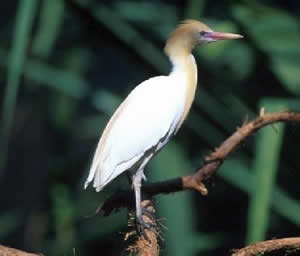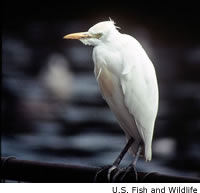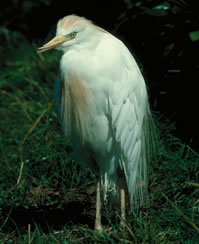Dairy goat farming in Kenya is emerging as a high-return option for Kenyan
small-scale farmers, although it remains hobbled in some regions by
marketing and distribution challenges, even as the sector soars in other
nearby regions.
Promotion of Dairy goats in
Kenya
started way back in the 1950’s by white settlers but it was not until
1980’s that Germany sponsored an integrated small livestock project that
scaled the activities around
Mt. Kenya.
As the project winded up in the year 1993, farmers came together
through registered groups and formed the Dairy Goats Association of
Kenya (DGAK) for sustainability of dairy goat projects. The project
targeted small scale farmers with little sizes of land that could not
sustain large stock and since then DGAK has spread over the country
including western Kenya.
Dairy goat in Kenya that produces 5 L of milk per day
It is one of the easiest types of dairy farming and therefore good
for farmers in the urban and peri-urban areas. Goats do not require one
to own a big
land to rear them and they are less expensive to buy as compared to cattle.The goat’s prices depend on the age, type and gender.
Why goat farming?
Dairy goat farming is an important enterprise especially for farmers
with small parcels of land. Goat’s milk has much more benefits compared
to cow’s milk. A goats milk is considered more easily digestible, the
milk fat globules in goats milk are smaller than those in the cow’s
milk, calcium content are higher in goat’s milk and iron contents lower
in goat’s milk. The goat’s milk is also richer in most vitamins than
cow’s milk.

Dairy Goat Farming in Kenya
Types of dairy goats reared in Kenya
The common breeds of dairy goats in Kenya even though are foreign
breeds are Toggenburg, Boer, Saanen, British Alpine, German Alpine,
Anglo Nubian, Angora, Oberhauzen. These goats survive on different
climatic conditions. It is best for one to contact the Local Livestock
Production Experts on the most suitable breeds or cross-breeding program
in your area.
Feeding the dairy goat.
All the goat requires is good
health
for better yields. Good feeding increases milk production. Dairy goats
can feed on the following: Calliandra, leucena, desmodium, mulbury,
nappier grass, rhodes grass, sweet potato vines, fodder trees, hay…
Hay. Dried feed
The feed should be chopped and the goat should be given clean water
and enough mineral salts. The mineral block should be kept dry. A
healthy goat will produce an average of 4litres of milk every day.
Housing
Good housing keeps the goats healthy. It should have a raised floor
to keep the goats dry and the roof not leaking. The feeding troughs
should be easy to clean.
Raised goats house
Worms and pneumonia are the most common diseases on the goats. The
symptoms of worms are worms or eggs in the goat’s stool, poor health and
low milk production or a thin or poor coat. This is normally treated by
de-worming. If the goat is sneezing, coughing has heavy breathing and
tends to isolate itself from others, consult a veterinary because these
are symptoms of pneumonia. Also ensure that the goats are free from
ticks and fleas. If you spot them or realize that the goat keeps rubbing
itself or looses hair by tail, spray the goat, the house and the
surrounding. Also spray any new goat coming into the house.
More about dairy goat farming in Kenya
Unlike local goats, dairy goats are bred for milk production and can
produce up to 10 times that of the locals. They multiply fast, kidding
twice a year often producing twins or triplets. The quality of milk and
the prices are higher than a cow’s milk.
You require only a half hectare of Elephant (nappier) grass
(penisetum puperum) grass to support five dairy goats. Establish a
source of fodder by planting or buying fodder locally. Fodder should
make the bulk of goat feed. Supplement feeds such as legume species
commonly used as pasture or fodder in Kenya like Calliandra, Leucaena,
Desmodium, grains and milling by-products, minerals, and molasses
provide essential nutrients, such as protein, energy and minerals, to
support milk production. If possible grow fodder shrubs around the edges
of the plot. The fodder should be able to last a whole year. Other
feeds include maize stover, sweet potato vines, banana peels and weeds.
Preserve feeds when in surplus in form of hay, dried fodder legumes,
leaves and maize stover.
Before buying and moving your goats, consult with the nearest
veterinary or livestock office for suitable breed of dairy goats to your
area and information on vaccinations against contagious caprine
pleuropneumonia (CCPP), pulpy kidney, tetanus and orf.
Construct a good house with raised slatted floor, good ventilation, feed and water troughs.
Feeding the goats
Ensure you are feeding sufficient forage and supplements for high level of milk production.
Provide roughages (like Napier grass) and supplements. Napier grass
should be chopped into approximately 3-cm-long pieces. Energy
supplements include molasses, cereals or milling by-products (bran,
pollard). Protein supplements include cotton seed cake, Calliandra
leaves, Leucaena leaves, sweet potato vines, Desmodium, fishmeal and
dairy meal.
A simple supplement can be made at home. For every 6 scoops of whole
cereal grains, add half a scoop of fishmeal or any of the following:
cotton seed cake, Calliandra leaves, Leucaena leaves, sweet potato vines
or Desmodium. Finally add a tablespoonful of mineral mixture. Mix well
before feeding.
Increase supplement by ½ kg per day during the last month of
pregnancy. When in milk, allow ½ kg of supplement for every 3 litres of
milk produced.
Breeding of dairy goats
Identify a good breeding male goat which has no deformities, with two
well-developed testicles, strong feet and legs, good body condition and
high libido. Libido is observed by the ability of the male to
vigorously detect and mate with females on heat. These qualities will
ensure successful mating.
One male is needed for every 25 females. This male can be communally
owned provided sexually transmitted diseases and other communicable
diseases such as brucellosis are controlled.
Mate females two months after kidding. Introduce a male and leave it
with the female goats for 2 to 3 weeks. If possible mate all your female
goats at the same time to ensure kids are born at the same time and
therefore ease management.
Breed females when in good body condition. Select those with a soft
udder, two functional teats and strong teeth and legs. Manage
reproduction in goats ensuring that first mating should be about 16
months of age because breeding too early can result in weak kids and
stunted females.
On average birth occurs 150 days after mating. Watch your goat closely one week before kidding in case of any problems.
Replace breeding animals at 9 years of age or earlier if they fail to
become pregnant. Organize for a periodic male exchange program to
prevent inbreeding.
Rearing the kids
Ensure the newborn kid suckles immediately after birth. The goat’s
first milk helps protect the kid from diseases, gets its digestive
system working and is especially nutritious. Disinfect the umbilical
cord immediately after birth with iodine solution or diluted
disinfectant to avoid infection. House both mother and kid in a dry,
well-ventilated and secure house.
Allow half to one litre of milk per day for the kid, depending on size. Wean at 3 months.
Introduce kids to roughage (chopped Napier grass, maize stover) by
the second week and supplements (0.25 kg per day) by the fourth week.
Controlling internal and external parasites
Deworm all adults before mating, all females 2 weeks before kidding,
kids at weaning (3 months of age), and all animals before the start of
the rainy season.
Use recommended sprays, pour-ons and powders to control external parasites such as Fleas, ticks, mites and lice.
Vaccinations
Vaccinate goats against the highly contagious disease goat pneumonia
(CCPP), pregnant females against pulpy kidney and tetanus 2 to 3 weeks
before kidding and vaccinate kids at 6 months of age. Vaccinate against
orf (scabby mouth disease) at 2 months of age. Orf can affect goat
handlers therefore wear protective clothing, such as overalls, when
handling your goats and wash your hands well with soap and water
afterwards.
Marketing goat milk
Local markets are readily available for goat’s milk. Obtain market
information on demand for goat’s milk or create demand by telling people
about benefits of goat’s milk. Try local hospitals, children’s homes
and individual households. You can make added-value products such as
cheese, maziwa mala or yoghurt.
You can also sell goats for profits which are currently very marketable and high in demand.



 Vision
Group in partnership with dfcu bank and the Netherlands Embassy in
Uganda is searching for Uganda’s best farmers. Harvest Money is
profiling nominated farmers every Tuesday until September when a panel
of judges shall select Uganda’s best farmers. Sh150m and a fully
sponsored trip to the Netherlands await the best farmers who will be
announced in October.
Vision
Group in partnership with dfcu bank and the Netherlands Embassy in
Uganda is searching for Uganda’s best farmers. Harvest Money is
profiling nominated farmers every Tuesday until September when a panel
of judges shall select Uganda’s best farmers. Sh150m and a fully
sponsored trip to the Netherlands await the best farmers who will be
announced in October.
















